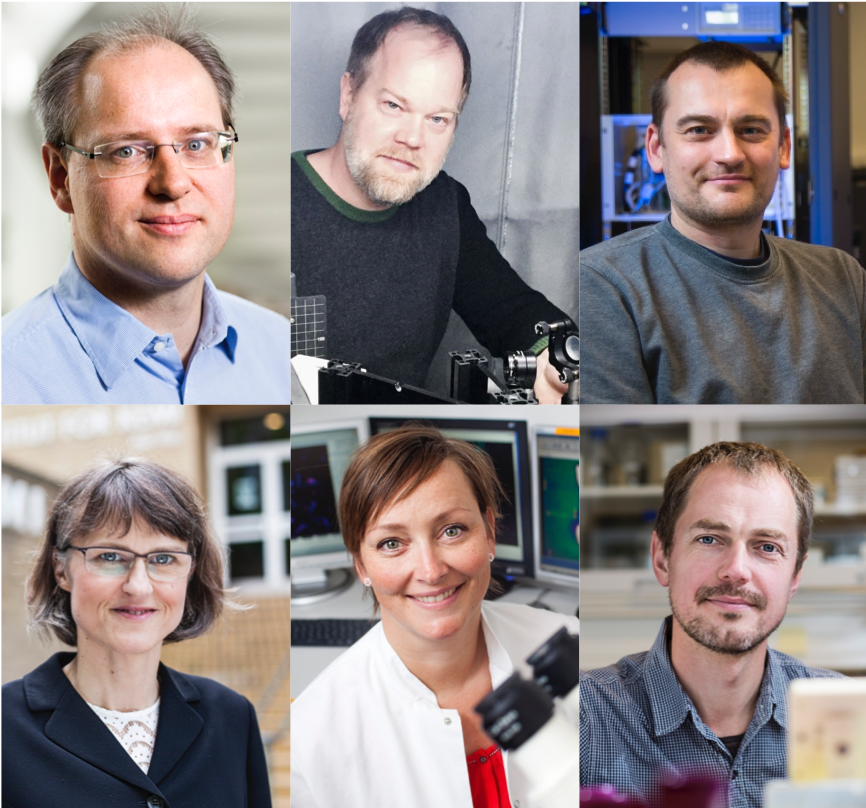The Novo Nordisk Foundation grants DKK 36 M for iNANO researchers
Henrik Birkedal, Merete Bilde, Tobias Weidner, Thomas Boesen, Rikke Louise Meyer, and Alexander Zelikin receive DKK 36 million in total from the Novo Nordisk Foundation for infrastructure for studying bone structure, studies in microbial aerosols, and the battle against antimicrobial resistance.

6 researchers associated with Interdisciplinary Nanoscience Center (iNANO) at Aarhus University has been granted DKK 36 in total from the Novo Nordisk Foundation for research and infrastructure. The researchers have received the grants within the funding programmes Research Infrastructure, Interdisciplinary synergy programme, and Exploratory interdisciplinary synergy programme.
Research infrastructure
The Novo Nordisk Foundation has just granted a total of DKK 75 million DKK for 6 projects at Danish universities that can strengthen the infrastructure of Danish research. Associate Professor Henrik Birkedal receives the biggest Research Infrastructure grant of the year of DKK 16.3 million for the project “Aarhus X-ray Imaging Alliance - AXIA”. The ambition of the project is to create a better understanding of bone structures during the course of disease and has as its ambition not only to bridge the gap between scientific fields, but also to do so between hospitals and international research facilities.
The grant makes it possible to acquire two new X-ray devices, which in each way will make it possible to look even deeper into bone structures during the course of the disease. Among other things, by creating 3D X-rays in vivo of unprecedented quality and resolution, making high-resolution 3D images with X-ray microscopy and combining them with studies using synchrotron radiation.
The project involves a wide range of disciplines at Aarhus University, and is led by Associate Professor Henrik Birkedal.
Read more about the Novo Nordisk Research infrastructure grant and background here.
Interdisciplinary synergy programme
Together with researchers from Department of Bioscience at Aarhus University Associate Professors Tobias Weidner, Professor Merete Bilde, and Cryo EM Facility Manager Thomas Boesen receive DKK 15,0 million to decipher the role of atmospheric microbial aerosols.
While an increasing number of studies indicate that microbial aerosols (bioaerosols) play a significant role in atmospheric processes e.g. cloud and rain formation, direct quantitative measurements identifying the conditions under which they are active as well as data on the degree of their actual impact are lacking. Data on their metabolic activity as well as on their ice-forming capacity at atmospheric conditions are missing. Hence, the project team will develop a unique experimental facility to study the role of microbial aerosols.
The project is a cross-disciplinary collaboration which will gather experts in microbiology, structural biology, atmospheric chemistry, physical chemistry and modelling.
You can read about the Novo Nordisk Interdisciplinary Synergy Programme here.
Exploratory interdisciplinary synergy programme
Together with researchers from Aarhus University Hospital and Pennsylvania State University, Associate Professors Rikke Louise Meyer and Alexander Zelikin receive DKK 4,9 million to study the path to tackling antibiotic-resistant infections.
Antimicrobial resistance has been named one of the biggest challenges facing humanity in this century. In addition to facing the rise of resistant strains, the antibiotics of today also fail to eradicate numerous infections by non-resistant bacteria. This is because current antibiotics target active cellular processes, but are ineffective against inactive non-growing bacteria. These inactive cells are the so-called “persisters”, which tolerate antibiotics and lead to treatment failure. The team behind the project proposes that novel antibiotics must be found among small molecules that eliminate both active bacteria as well as persisters. Armed with a recent discovery of such activity by 8 small molecules belonging to only 2 structural clusters, they set out to discover the cellular targets that lead to killing of persisters. The vision of the research team is to pave the way for developing the next generation of antibiotics, and to show that smart delivery of such drugs by on-demand release will prevent the development of resistance.
Contacts at iNANO
AXIA - Aarhus X-ray Imaging Alliance, DKK 16.379.168
Associate Professor Henrik Birkedal, Department of Chemistry and iNANO, hbirkedal@chem.au.dk
Deciphering the Role of Atmospheric Microbial Aerosols (DRAMA), DKK 14.959.053
Associate Professor Tobias Weidner, Department of Chemistry and iNANO, weidner@chem.au.dk
Cryo EM Facility Manager Thomas Boesen, Department of Molecular Biology and Genetics and iNANO, thb@mbg.au.dk
Professor Merete Bilde, Department of Chemistry and iNANO, bilde@chem.au.dk
The path to tackling antibiotic-resistant infections, DKK 4.935.171
Associate Professor Rikke Louise Meyer, Department of Bioscience and iNANO, rikke.meyer@inano.au.dk
Associate Professor Alexander Zelikin, Department of Chemistry and iNANO, zelikin@chem.au.dk